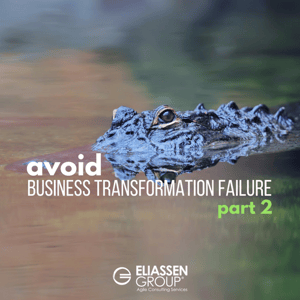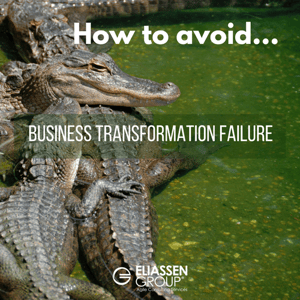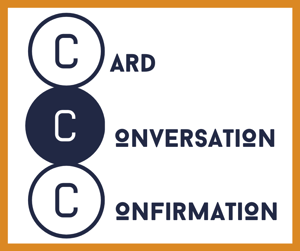Part Two: Three Transformative Truths Essential to Success
If people knew the future of most change initiatives, they would tip Nostradamus, thank him for the vision, and head in the other direction.
We need to learn to flip the script on organizational transformation so that we can stop making the same critical mistakes and start enjoying greater success. In part one of Avoid Business Transformation Failure: 3 Transformative Truths we discussed how half-hearted and poorly-executed transformations cause rubber band effects which disrupt organizations and demoralize employees and managers alike.
In this installment we will explore the three transformative truths that will leads us away from a future of struggle and into a future that maximizes our organizational strengths and opportunities.
The 3 Key Transformative Truths to Avoid Failure:
If the existing order contains the DNA of how things are done today, then any transformative change requires altering that DNA. That’s the first truth of transformation; it requires a sizable break from the way things are today.
Transformative Truth #1 - Transformation requires a sizable break from the way things are done today.
If what you do today got you today’s results then what will a slight variation bring? More of the same of course, which is why transformation requires disruption. When we talk about disruption we are really talking about bringing about a fundamental change in how we design our organizations. This includes both our business and operating models. This is the first realization necessary to avoiding a rubber band change.
A big part of flipping the traditional transformation script is realizing the new has to be different than the old, but that is challenging given our desire for loss aversion. As we said earlier, no one does anything they do not value. To flip the script we need more than a reason; we need a higher purpose to give us a ‘why’ that transcends our loss aversion.
Transformative Truth #2 - Transformation requires a clear, higher purpose with real stakes that everyone must contribute to in order to achieve success.
Our ‘why’ should always orient our ‘what’ or else we splice regression into the DNA of even the best intentioned transformation. To put it in organizational design language, our business model should always contain the ‘call to action’ for our operating model. I’ve only worked on a few transformations that have gotten this right because it requires accepting a fair degree of upfront risk - the risk of accepting that everyone may see your failure.
“Leadership must model the change for all groups or departments involved, which means taking on the initial risk much like a venture capitalist.” - Mark Hill
The higher purpose ‘why’ needs to be visible and measurable to drive for everyone’s work, and it ultimately needs to contribute to bottom-line success.
In a poll taken at a recent conference, I found out that 50% of people in an active transformation do not have a primary measure of success. They do not have a ‘call to action’ that goes deeper than a desire to operate differently. Difference for difference’s sake is the siren call for confusion and regression. The impulse for today’s difference can easily turn into a desire for yesterday’s standard, especially during the dog days every serious transformation experiences.
A higher purpose-focused business design can be challenging enough to navigate, but it is almost impossible when you are living in the old-world power structure. The old world explains its value by doing old-world things; when it loses the underpinnings of that purpose its adherents start mounting those machine guns on old pick-up trucks.
The old world desires old-world ways of doing things and the new world, which is being built to simplify the old and create value faster, quickly finds itself outnumbered.
Transformative Truth #3 – Create a power structure with autonomy and authority equal to the magnitude of the change.
Towards the beginning of this article I talked about people only doing what they value so a natural next question is: Where do people get their values? Leaders play a strong role in determining values which informs how their people function. That’s why a distinct transformational power structure is essential. Leadership must model the change for all groups or departments involved, which means taking on the initial risk much like a venture capitalist.
Typically this group is called a transformation management office. Their role is to embody these three transformative truths and create the new strands of organizational DNA. The authority of the transformation management office should be directly given and linked to the C-Suite; anything less leaves them operating in a rubber band world which does not provide the authority or, as importantly, the autonomy to create a brave new transformed model.
Flipping the script on traditional transformation requires escaping the traditional rubber band world of change. The greatest danger for transformation leaders isn’t the risk of failing to fully transform; it is creating the rubber band conditions to walk straight into the alligator pit.
The good news is the alligator pit is a threat - not a promise. We have the three transformative truths to help test the path and create the DNA necessary for transforming the value of your company.



